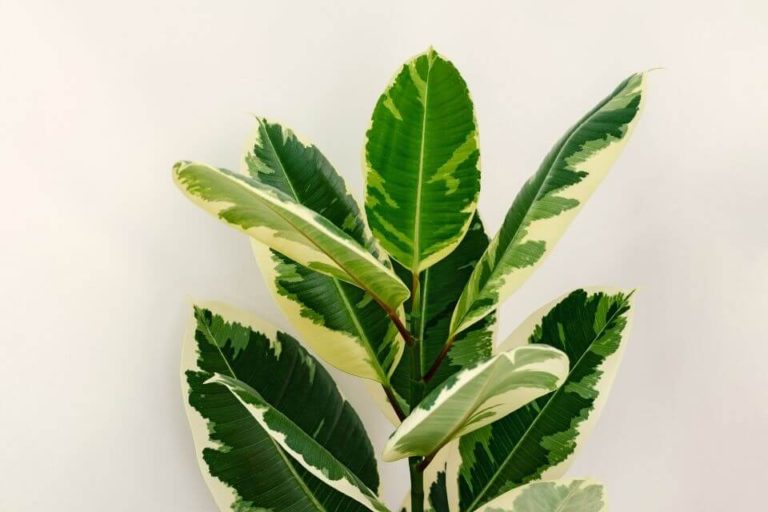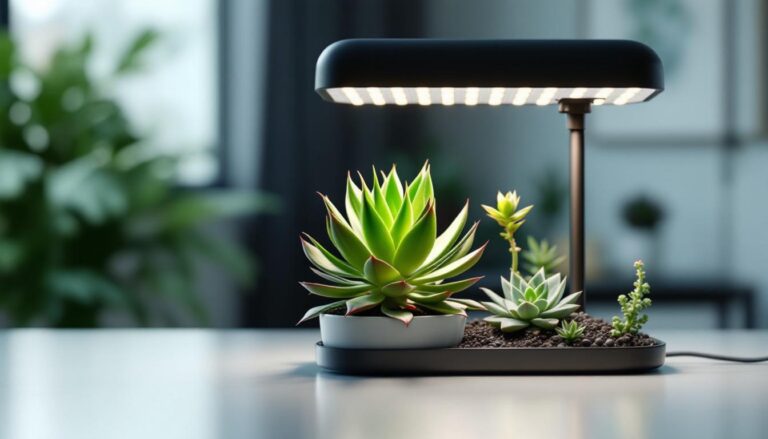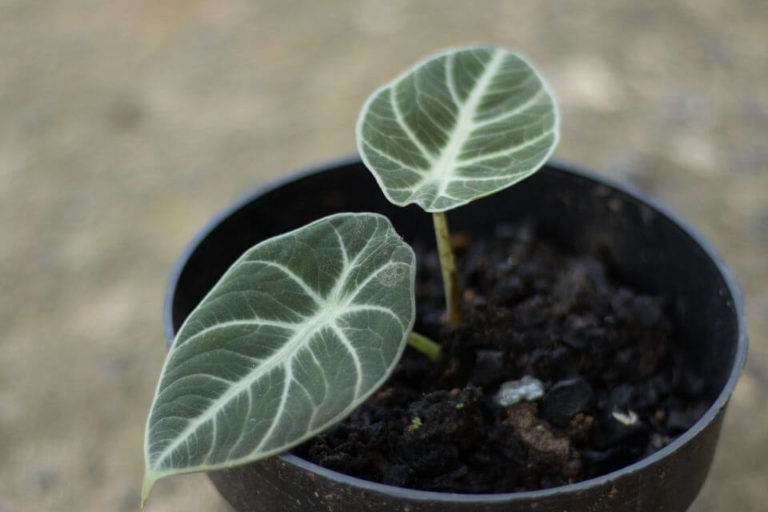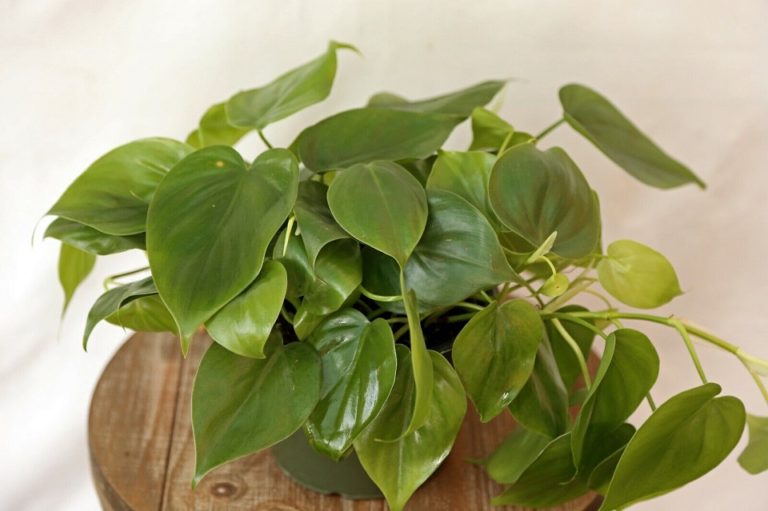Peperomia Hope Care: A Guide To Care, Plant, Grow, Repot & Propogation
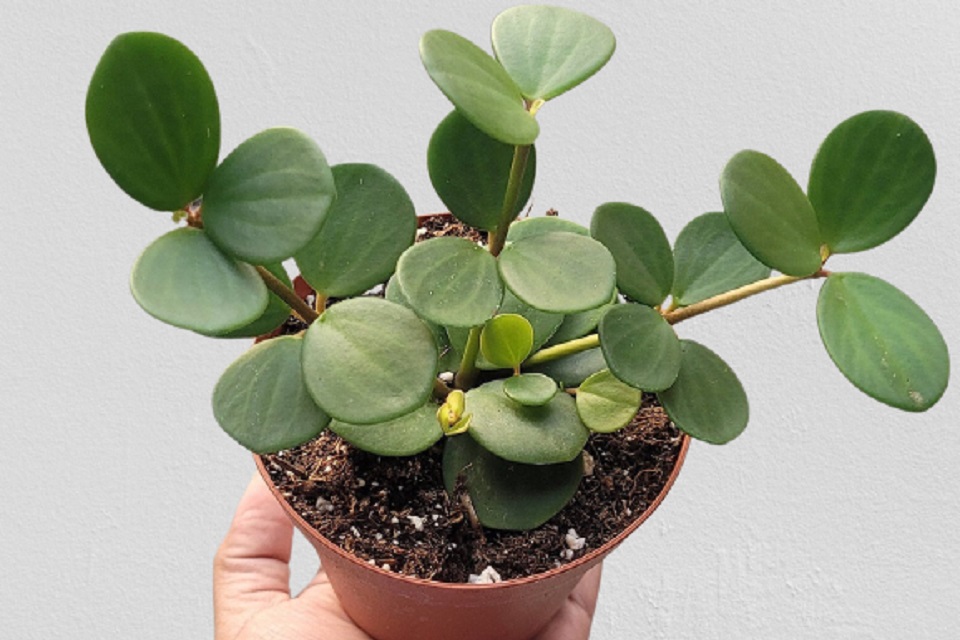
Peperomia Hope is a popular plant with oval succulent green leaves. The leaves are small and grow in groups of four or three on the plant stem. This plant is a perennial plant usually grown in a hanging basket due to its compact growth.
You can train its stem to follow a specific direction. This plant can also produce small flowers that are like long spikes that are green and white in color.
With this article, you will get a complete guide on planting and propagating the Peperomia Hope plant. You will also find other valuable tips that will help you grow this houseplant and enhance the outlook of your home.
Now let’s dive in deeper to discover more about the plant and care instructions.
| Highlights: | |
|---|---|
| Common Names: | Peperomia Hope |
| Botanical Name: | Peperomia Hope |
| Plant Family: | Piperaceae |
| Plant Type: | Tropical perennial |
| Origin/Native: | Tropical rainforest of South America |
| Care Level: | Easy |
| Grow Zone: | 9b - 11 (USDA Hardiness Zone) |
| Size: | Up to 8″ inches spread and 12″ inches high |
| Soil Requirement: | Light and well-draining soil with low pH levels |
| Water Requirement: | Medium moisture levels |
| Sun/Lighting: | No direct sunlight, but require bright light |
| Temperature Req: | 65 °F - 75 °F (18° - 24°C) |
| Propagation: | Stem or leaf cutting |
| Toxicity: | Not toxic to pets or humans |
| Flowering/Color: | Green and white |
| Uses: | House plant for decorative purposes. |
TABLE OF CONTENTS
What is Peperomia Hope Plant
Peperomia Hope Plant is an epiphyte plant consisting of roots for absorbing nutrients and moisture from water and air. This plant has different growing habits, which is an ideal option for a houseplant that will need minimal maintenance and care.
It is also referred to as a radiator plant because of the plant-like sunlight and warm air. The plant leaves look like oval or round leaves. Collectively all types of Peperomia Hope Plant are an ideal option as indoor plants that you can plant in pots or hanging baskets.
Peperomia Hope is a beautiful hybrid Peperomia plant that belongs to the popular houseplant genus Peperomia.
It’s a cross between Peperomia Deppeana, small green round leaves on medium-sturdy stems, and Peperomia Quadrifolia plant that has tiny green round leaves on thin stems.
The first step in growing Peperomia Hope in your garden is knowing it in detail. The leaves along the stem are in fours or three, similar to Peperomia tetraphylla plant.
The leaf veins or light oblong-like stripes on the leaves are comparable to Watermelon Peperomia. You can find this plant in South and Central America’s tropical climates.
As a result, the most suitable conditions are to maintain the temperature between 65 °F and 75 °F (18° to 24°C), keep soil moisture the same as succulents, a good humidity, under filtered light, and have breathable soil.
Peperomia Hope Size, Growth, and Appearance
In terms of size, the plant is not a big one. It is a small plant that can grow up to around 8 to 12 inches. The plant has a compact size perfect for growing them in desktops, dishes, pots, or baskets. The plant does not grow or spread and overtake the other plant nearby.
Peperomia leaves are rippled, smooth, or puckered. Sometimes you can find other types of this plant to have blotchy, marbled, or striped patterns leave. They have greenish or white spikes like flowers that you can find at the end of their stems.
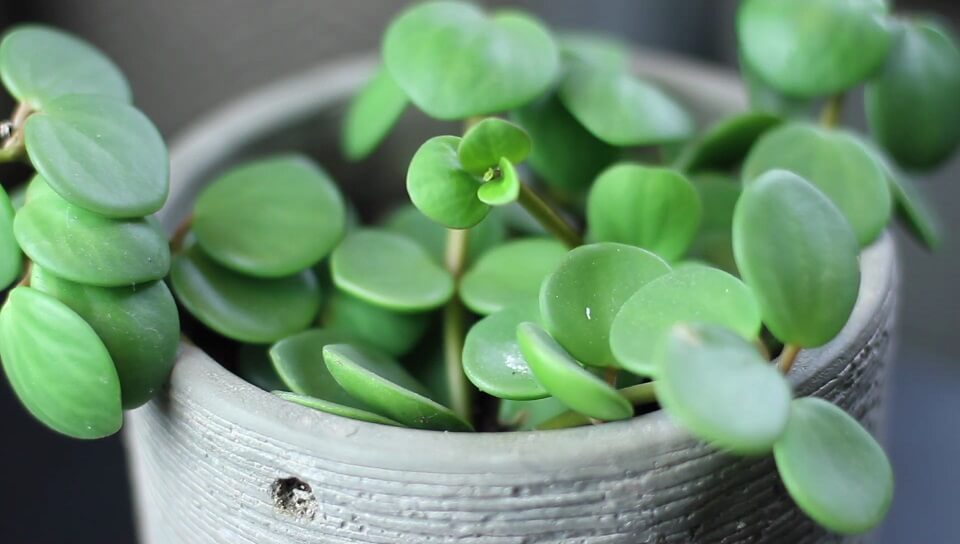
Use Peperomia Hope Plant for Home Décor
The Peperomia Hope Plant has a lot of uses in terms of decorating your home décor. Since the plant has a soft stem and succulent leaves, growing it in your home or house is straightforward.
You can place it in various places in your residence. It requires little space. This plant can survive in harsh conditions so that you can use it indoors or outdoors.
Therefore, the Peperomia Hope Plant’s primary use is to supplement your home aesthetic.
You can place the plant on your balcony, windowsill, desktop, and many other places. Its beautiful foliage will add an aesthetic feature to your home or office.
Peperomia Hope Care & Maintenance
Though the plant requires minimal care and maintenance, there are some things that you must put into consideration. The maintenance of the plant is based on several conditions and requirements.
Here are some of the care and maintenance you can put into consideration.
– Choosing Right Soil Base
Epiphytic plants have one thing in common: they need oxygen; a well-draining mix aids in giving the roots the required air. You’ll also need to modify your existing soil with rough components such as coco-chips, brick fragments, or river sand with a lot of minerals.
Peperomia Hope is a succulent-like plant with fleshy leaves, but it requires consistent moisture. If the soil gets too dry, the delicate stems droop.
While draining materials are necessary, moisture-retentive goods are also required. Use sterile compost, coco peat, pixie dirt, soft mulch, and animal dung manure for moisture retention.
The fact that you may use organic soil additives for Peperomia Hope is what makes it so appealing. They boost the moisture-holding capacity of the soil and its acidity.
You’ll need a soil pH of 6 to 6.6 to grow Peperomia Hope successfully. Also, mix the organic sild with a non-organic soil ratio at around 50 percent each.
– Watering Peperomia Hope Plant
Peperomia Hope care requires careful watering. It’s closely linked to the potting soil you employ. It would be best to have the correct soil portion, which is a 50/50 blend of organic and draining components.
When you water the pot, all of the water should drain out through the drainage hole within seconds, leaving no trace of soil behind. If you do it well, the next step is to perform the top-soil touch test regularly.
Pinch the top inch of soil mix. If it feels hard and crumbly, then that’s your watering day.
The cycle lasts three days in peak summers. It gradually declines to 10 days or even two weeks as winter approaches. Also, if Peperomia Hope is kept away from direct sunshine, it can withstand a little drought but not waterlogging for very long.
Since the plant is succulent like-plant, it prefers moistness.
– Lighting Requirement
Peperomia Hope thrives in bright, filtered light. Many gardeners claim that they grow well under low-light conditions. Peperomia Hope care does not require a lot of sunlight.
In either case, if you expose the plant to low light for an extended period, its leaves become jaded.
You may also cultivate it in a railing planter with a balcony. This plant looks great against the bright green of your balcony. If you have an east or south window with consistent illumination, that’s also fantastic.
Also, it is good to place it behind sheer curtains or a meter away from the window.
– Best Temperature Range
Peperomia Hope requires a warm temperature of 65° to 75°F (18° to 24°C). It’s a moderate-temperature-loving plant that can’t survive in the cold. Peperomia Hope may be cultivated outside throughout the year if you live near the equator.
Otherwise, move your container inside away from the cold drafts in the colder months.
Peperomia Hope care becomes more complex in cold weather areas. However, it is supposedly a tropical plant that can tolerate various temperature levels. The fleshy plant dies when exposed to even a little bit of frost.
Therefore keep it away from drafts coming from air conditioners and heaters. They become stressed out in rapid temperature changes. Make sure there’s sun protection and sufficient watering.
– Does Peperomia Hope Need Humidity?
Absolutely, Peperomia Hope is quite tolerant of a variety of humidity levels. Because the plant is native to rainforests, you would expect it to be humid. Peperomia Hope thrives even in the drier air.
In my experience, typical house conditions of 40-50% humidity are enough. However, they would appreciate a little humidity in the air using a humidifier or a pebble tray.
If the leaves are kept wet for extended periods, they may rot and become ill. Proper Peperomia Hope care requires careful attention to both humidity and air circulation.
– Fertilizing Peperomia Hope Plant
Epiphytes don’t require any special care. Peperomia Hope is a hybrid cultivar; it does respond well to fertilization. However, if you want to use fertilizer, you have to add slow-release fertilizer to the soil.
You can do this while potting the plant and adding rich organic supplements to the soil mix.
You can also fertilize with a well-balanced liquid fertilizer every month, such as a 10-10-10. Just make sure it’s three to four times weaker than the instructions on the bottle suggested.
– Pruning Peperomia Hope
Peperomia Hope is a trailing plant that may require some trimming from time to time. It would be best to cut the side stems or snip leggy vines with a few leaves to create an attractive appearance.
Peperomia should be pruned in the early spring when entering its development phase.
To trim your Peperomia Hope, use a clean pair of scissors or shears. After each usage, sterilize the blades with alcohol to prevent pests and diseases from spreading to other plants.
When you prune your Peperomia, you may use the cuttings to grow more plants. It is very unusual.
However, Peperomia Hope may develop an inflorescence that resembles a long, white spike. Because the blooms are tiny and inconspicuous, they shed a lot of pollen.
You may remove them to encourage the plant to devote more energy to new leaves and shoots.
Peperomia Hope has a medium rate of growth. It only needs to be repotted once every two years, and it has a limited root system. If you detect roots emerging through the drainage hole on the bottom of the pot, move it to a new container.
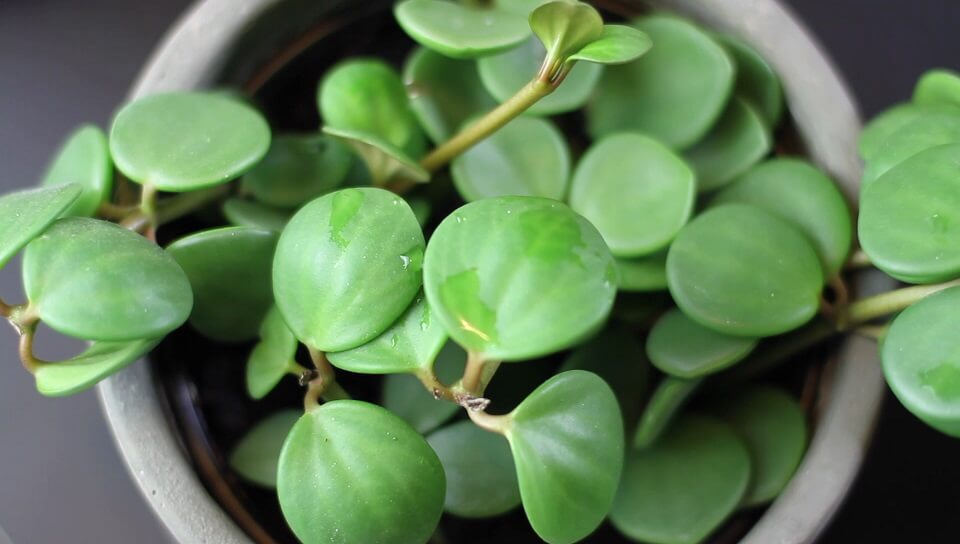
– Re-Potting of Peperomia Hope Plant
Peperomia hope is a slow-growing plant that will not require regular repotting. It’s another thing to have long vines. It doesn’t imply your plant needs a larger container. Repotting is related to the size of the roots.
Pruning also promotes plant growth. If the plant trails further than you want, use sharp Kinfe or shears to cut it back.
You may also use the pruned vines to cultivate additional plants. Plant them in new pots with a lot of Peperomia hope plant containers.
When roots are densely packed and emerge on the upper surface, it’s time to repot the plant. Then you’ll need to transplant it. Use a bigger and deeper pot, at least 2 inches wider and deeper.
The truth is that if the container is too big, it will cause root rot-like issues.
What is the Best time for Repotting?
The best time is summer and spring. In winter, the plant enters dormancy, so repotting it during the colder months may cause stress, and the plant may not thrive in the new container.
Peperomia Hope may require repotting even if it has outgrown its container. If your plant shows signs of strain, such as yellowing or curling leaves, try using a new potting mix.
Repotting is another alternative for sick plants, as it relieves constricting soil. Never reuse the old soil from ill plants since you may carry pathogens and pests over to the new container.
What is the Best Container for Peperomia Hope?
Pots that wick water away from the soil prevent it from becoming too wet.
You may also employ plastic, but keep in mind that it is non-porous and keeps the soil wet for longer. Therefore, plants potted in plastic containers need to have their soil moisture levels checked more frequently.
Pick a container at least 2 to 3 inches (2 to 5 cm) wide. Using too big pots will cause the soil to retain too much water, resulting in fungal issues later on.
Step by Step Propagation Methods of Peperomia Hope Plant
– Stem Cutting Propagation in Water
Use clean, sharp scissors to cut a few sections below a node. The plants should have a few leaves. The node is where leaves and roots emerge from the main stem.
Pluck some leaves from the base of the cutting and stick them into a jar of water to keep it wet. An underground node will be required since new roots will spring forth. You should remove any leaves that become submerged.
Place the cuttings in a location with nice, indirect light. When the water becomes murky, replace it and ensure the water level does not drop too much. You may plant them in a container with potting soil. After that, water it and tend to it as you would any other plant.
– Stem Cutting Propagation in Potting Mix
As the propagation in water, you should also cut from a node, use clean, sharp scissors to cut it just below the node. The leaves should have a few leaves on them. The node is where leaves and roots develop out of the main stem.
Remove some of the leaves from around the cutting base and insert them into a container with wetted potting mix. There should be at least one node underneath the mix’s surface since this is where new roots will spring forth.
Remove any leaves that are covered by mulch. Place the cuttings in bright, indirect light. Keep the potting mix wet but not overly so. The potting mix should be kept in an open-air container, such as a planter or something similar.
Cover the top with a transparent plastic bag to increase cooling and humidification. Every few days, open the bag to allow fresh air in. You may also use water to mist the mixture when needed.
After a few weeks, you may try your cutting by tugging on it gently. If you feel any resistance, the root structure has developed, and you can treat it like a typical plant.
– Leaf Cutting Propagation in Potting Mix
Leaf cuttings are more difficult to grow into new plants. However, you can propagate many Peperomia through leaf cuttings.
Remove a few healthy, mature leaves from the stem but keep the petiole attached to the leaf. The petiole is a little stem that connects the leaf to the main stem.
Stick the petioles into a pot with wetted potting mix and set it in indirect light. Remember not to overwater the plant leaves, but the potting mix should remain moist.
To raise the humidity level, cover the top of the container with a transparent plastic bag. Open it every few days to allow fresh air in. You may also mist the potting mix as required.
It might take a few weeks for new growth to show, but remember that patience is essential. Leaf cuttings are usually propagated directly into the potting mix.
Common Diseases and Problems
Peperomia Hope is a low-maintenance houseplant that shouldn’t cause you too much trouble. However, some common diseases and problems can affect the plant.
Let’s look at the most frequent disease and problems affecting the Peperomia Hope plant and how to deal with them.
– Curling Leaves
If your Peperomia Hope’s leaves are curling, it might indicate that you’re watering incorrectly or not giving it enough nutrients. If this happens, check the soil with your finger; water the plant using the ‘soak and drain’ technique if it feels dry to the touch.
Throughout the spring and summer, fertilize your Peperomia with organic fertilizer or a diluted synthetic one.
– Brown Spots on the Leaves
Brownish brown spots on the Peperomia Hope leaves with a yellow edge indicate that something odd is going on. Houseplants frequently acquire fungal diseases as a consequence of overwatering.
If the soil in the container is excessively wet, take the plant out and look at the roots.
For root rot, you will see soft, black, or brown roots with an unpleasant odor. Trim off the sickening roots and repot the plant in fresh, well-draining potting soil. Avoid overwatering your plant to minimize root disease.
– Dropping a Lot of Leaves
There are two reasons for this. If you’re fortunate, your Peperomia Hope’s leaves are falling because it’s been exposed to cold drafts. You can transfer the plant to a shade to ensure the temperature drops below 59°F (15°C).
However, falling leaves might also indicate root rot or other water-related issues.
– Leggy Growth and Faded Leaves
Peperomia Hope is suffering from insufficient light. Because the leaves fail to produce photosynthesis, the plant has developed long, bare vines searching for light.
If your home is too dark, relocate your plant to a location that receives bright, indirect light and utilizes grow lights in the winter.
– Soft, Yellow Leaves
If the leaves on your Peperomia Hope are turning soft and yellow, the plant is most likely overwatered. Keep in mind to only water when the top inch of soil is dry, and decrease your watering schedule during the winter.
Ensure the soil is well-draining and that the container has a bottom drainage hole, as this plant detests having “wet feet.”
Insect Pests Problems for Peperomia Hope Plant
– Mealybugs
Mealybugs are the most frequent pests for Peperomia Hope. These insects thrive on plant sap and are drawn to the plant’s juicy, succulent leaves. They also produce honeydew that attracts sooty mold.
Mousy infestations can cause leaf growth to be stunted, leaves to wilt, and leaves to bruise. To get rid of them, use a mixture of water, neem oil, and a drop of dish soap to spray the plant.
– Spider Mites
Spider Mites are a common infestation, especially in houses with poor air circulation. They suck the juice from your plants as well.
Peperomia Hope spider mites are difficult to spot because they lurk beneath the leaves, establishing colonies covered in a fine, white web. Spray the leaves of Peperomia Hope with a solution of water and isopropyl alcohol to remove spider mites.
Frequently Asked Questions
Is Peperomia Hope a Succulent?
It is not succulent, but the plant has epiphytic leaves that are somewhat thick like succulents. They grow rapidly under the right conditions and require less maintenance to maintain the succulents.
Is Peperomia Hope Toxic To Pets Or Humans?
No, Peperomia Hope is not toxic to pets or humans.
Does Peperomia Hope Plant Flowering?
Yes, Peperomia Hope has attractive foliage, but the blooms are small. It has a long-blooming season and grows well in a variety of situations. Their appealing appearance also makes them ideal for window displays or terrariums.
In a residential setting, blooming is unlikely to happen. The blooms are long and thin, and they have green or brown veins that don’t resemble flowers.
Does Peperomia Hope Need Sunlight?
Yes, Peperomia Hope may be grown in full or part shade. Give it enough filtered light to thrive. Potted peperomia ‘Hope’ should be grown in indirect sunlight to produce compact, healthy development.
The ideal peperomia ‘Hope’ location is on an east- or west-facing windowsill.
Does Peperomia Hope Climb?
Yes, Peperomia Hope is a climbing small green-leafed variety with red or green stems planted in pots and gardens. It’s excellent for growing in terrariums, tiny pots, and hanging baskets or as a ground cover.
Is Peperomia Hope a Good Indoor Plant?
Yes, Peperomia hope is a good indoor plant that you can plat in dishes or pots and place in the place of your choice in your home or office.
Why is My Peperomia Hope Leggy?
If your plant is leggy, its indication is not getting enough light. To promote a fuller plant, increase the amount of light or trim your plant slightly back.
Should I Mist My Peperomia Hope Plant?
Yes, Peperomia Hope plants thrive in a humid environment, with 70 to 80 percent relative humidity. To guarantee healthy growth, keep room humidity at least 50 percent.
Every day, mist the leaves using distilled or filtered water to provide adequate moisture.
Why is My Peperomia Hope Curling?
Leaves curl due to a lack of soil moisture. If your soil moisture levels are unpredictable and not constant, try keeping your potting mix from becoming completely dry or retaining too much water.
Takeaway
The Peperomia Hope is an excellent plant for people with little space. The low-growing style makes it very adaptable to indoor use. You may grow Peperomia Hope in your kitchen or bathroom, as well as on a tabletop or a windowsill.
The leaves, bright green and shaped like clover, provide a unique touch to the area. You may consider using this plant to add a unique stunning look to your decor.

